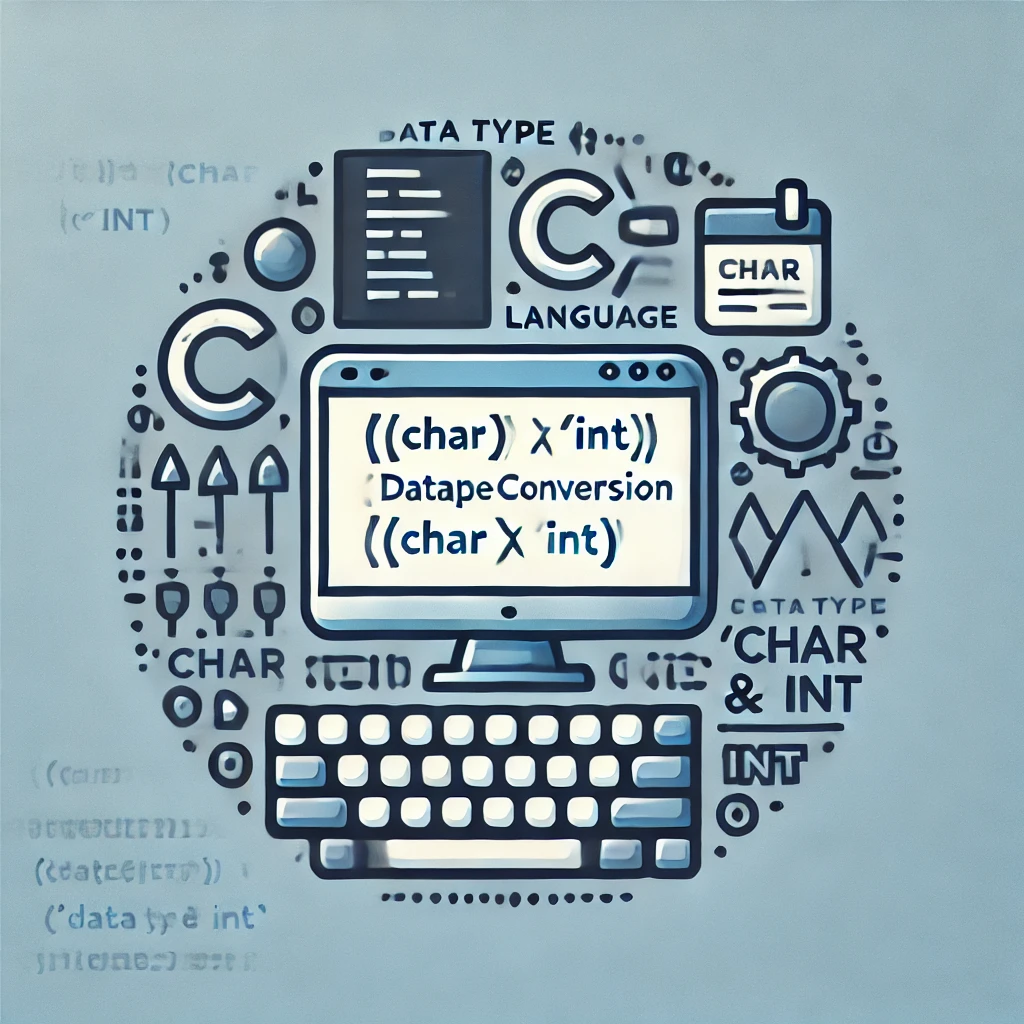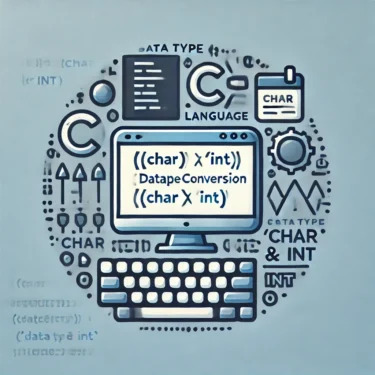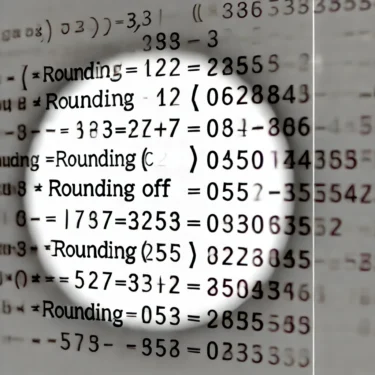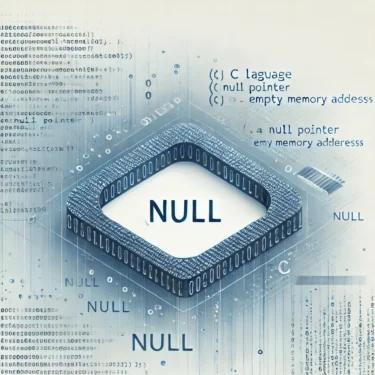1. The Importance of Data Types in C Language
In C programming, data types have a significant impact on the accuracy and performance of your programs. char and int are fundamental data types frequently used within programs, and there are many situations where you need to convert between them. In this article, we explain how to convert between char and int types and what to watch out for.
Common Uses for Conversion
Converting between char and int types is helpful when you want to handle both characters and their corresponding numeric values, or when you want to save memory. For example, you may convert the ASCII code represented by a char to an int to perform calculations. Also, when you need to process input values as numbers that were entered as char, this conversion is necessary.
2. Converting from char to int
In C, you can convert from char to int using type casting. This allows you to treat the value of a char as an integer.
Basic Conversion Method
To convert a char value to an int, simply use a type cast.
#include <stdio.h>
int main() {
char character = 'A'; // ASCII code of 'A' is 65
int intValue = (int)character; // Cast char to int
printf("The ASCII code of character %c is %d.\n", character, intValue);
return 0;
}
This program converts the character 'A' to an integer and prints the result. The output will be 65.
Signed and Unsigned char Types
C language provides two types of char: signed and unsigned. A signed char can hold negative values, while an unsigned char can hold values from 0 to 255. When converting a char to an int, it’s important to be aware of this distinction. Here is an example of converting an unsigned char to int:
#include <stdio.h>
int main() {
unsigned char uChar = 200; // Unsigned char type
int intValue = (int)uChar;
printf("Converting unsigned char value %u to int gives %d.\n", uChar, intValue);
return 0;
}
In this program, the value 200 of an unsigned char is converted to int and displayed as 200. With signed char, the result may differ due to sign handling, so precautions are necessary depending on the case.
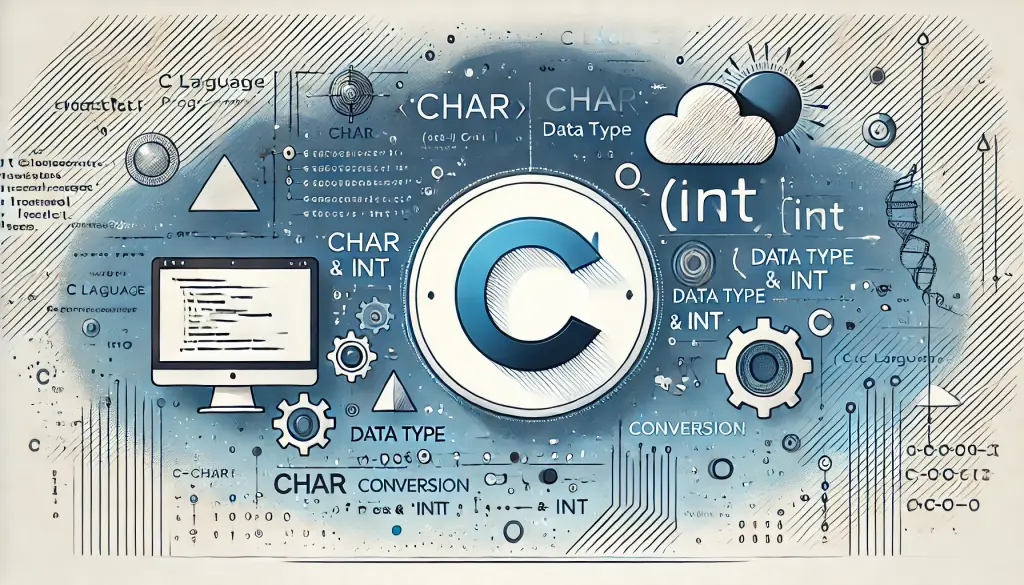
3. Converting from int to char
Converting from int to char means casting a larger integer value to the smaller char type. However, if the int value exceeds the range of char, data loss can occur, so caution is required.
Conversion Method and Precautions
When converting an int to a char, if the value is out of the char range, you may get unexpected results.
#include <stdio.h>
int main() {
int number = 300; // Value out of char range
char character = (char)number; // Data loss occurs
printf("Converting integer %d to char gives character '%c'.\n", number, character);
return 0;
}
In this program, converting 300 to char may cause data loss and display an unintended character. Always pay attention to the valid range for the char type.
4. Converting Strings to Numbers
In C, converting strings to numbers is a common operation. For example, it’s often necessary to convert user input (as a string) to an integer. Functions like atoi and strtol are useful for this purpose.
Conversion with atoi Function
The atoi function allows you to easily convert a string to an integer, but its error handling is limited.
#include <stdio.h>
#include <stdlib.h>
int main() {
char str[] = "1234";
int number = atoi(str); // Convert string to int
printf("Converting string %s to integer gives %d.\n", str, number);
return 0;
}
This program converts the string "1234" to the integer 1234 and outputs the result. However, it cannot handle errors robustly.
Safe Conversion with strtol Function
The strtol function is a safer way to convert strings to numbers because it checks for errors during conversion.
#include <stdio.h>
#include <stdlib.h>
int main() {
char str[] = "1234";
char *endptr;
long int number = strtol(str, &endptr, 10); // Safely convert string to int
if (*endptr != '\0') {
printf("Conversion failed.\n");
} else {
printf("Converting string %s to integer gives %ld.\n", str, number);
}
return 0;
}
This code displays an error message if the conversion fails. This makes it safer to handle numbers.
5. Practical Examples Using char and int
Finally, let’s look at some practical examples combining char and int types.
Mixed Calculations with char and int
The following program demonstrates calculations using both char and int. This example creates a new character by adding a number to a character’s ASCII value.
#include <stdio.h>
int main() {
char ch = 'a';
int num = 3;
char result = ch + num; // Add 3 to ASCII value of 'a'
printf("Adding %d to character %c results in character '%c'.\n", num, ch, result);
return 0;
}
In this program, adding 3 to the ASCII code of 'a' produces 'd'. It’s a simple example of operating with both char and int types together.
